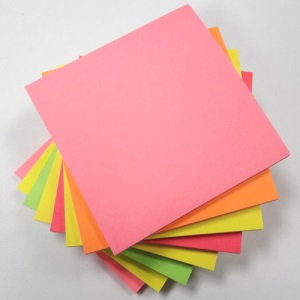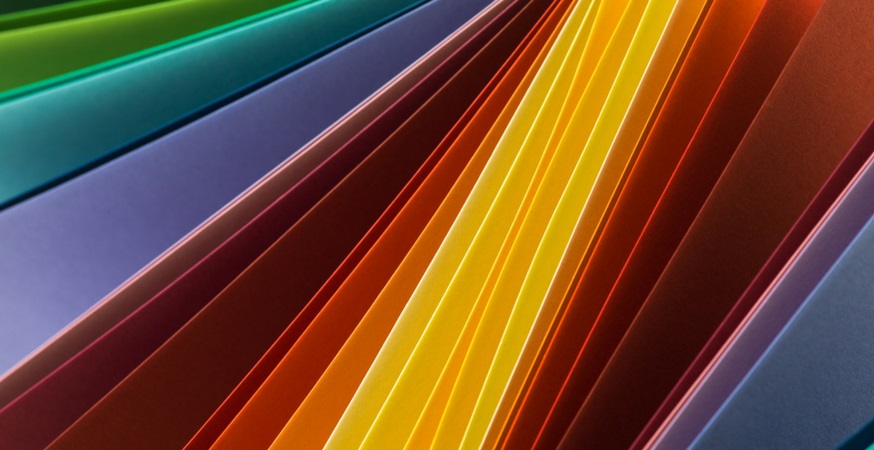Designers, crafters, and wedding professionals know that not all paper is created equal. When you want to add extra dimension and durability to your creative projects or wedding stationery, standard printer paper simply won’t cut it.
Our newest blog series, the Ultimate Guide to Card Stock, will explore the many aspects of card stock, including different weights, sizes, colors, and finishes, as well as common and ideal uses for each variety. But before we dig into what you can do with card stock, let’s take a look at what card stock actually is.
What is Card Stock?
Card stock, sometimes spelled “cardstock”, is thicker and more durable than regular printer paper, but it’s thinner and more flexible than cardboard. This balance between durability and flexibility makes cardstock ideal for a number of crafting and design applications.
Card stock is also sometimes referred to as “cover stock”. While the terms “card stock” and “cover stock” are roughly analogous, there are subtle differences between the two:
- Card stock is typically smoother and more generic in appearance, and is often measured and sold according to caliper, or thickness in points. We’ll explain what this means in Part 2!
- Cover stock is often coated and textured, and is typically measured by basis weight. This term is often reserved for heavy-weight papers of a decorative nature.

Card stock (and cover stock) is typically made using a blend of hardwood and softwood materials. Hardwood allows for proper formation, while softwood fibers provide strength. Every mill uses different fibers at different ratios, resulting in a wide variety of qualities, weights, and finishes.
The Ultimate Guide to Card Stock
Throughout the series, we’ll explore the many varieties of cardstock and suggest some common and ideal uses for each. Here’s what you can expect to find in the Ultimate Guide to Card Stock:
Part 2: Weights & Sizes
Part 2 of the Ultimate Guide to Card Stock will define paper weight and outline the different ways that card stocks are weighed and sold. We’ll explore uses for some of the most common weights, and provide suggestions for some of our most popular stocks.
We will also take a look at sheet sizes and provide tips for selecting the right sheet size for your creative project.
Part 3: Finishes & Colors
Cardstock is available in a number of textured paper finishes, such as smooth, vellum, linen, and metallic. Part 3 will take a closer look at the differences between these textures and indicate common uses for each.
Part 3 will also outline the basics of color theory and color psychology to help you select the perfect shade for your next creative project.
Part 4: Printing & Finishing Services
Printing on card stock is different than printing on standard computer paper. Part 4 of the Ultimate Guide will share best practices for printing on card stock, including tips for printing at home and commercial printing.
We will also take a look at our printing services, which include cutting, scoring, perforating and drilling.
Part 5: Uses for Card Stock
Cardstock is incredibly versatile. Part 5 will explain when you may wish to consider using card stock rather than standard printer-weight paper, as well as suggest common and ideal uses for each weight, size, finish, and color.
Part 1: Introduction to Card Stock
Part 2: Paper Weights & Sheet Sizes
Part 3: Paper Finishes & Colors
Part 4: Printing & Finishing
Part 5: How and When to Use Card Stock



